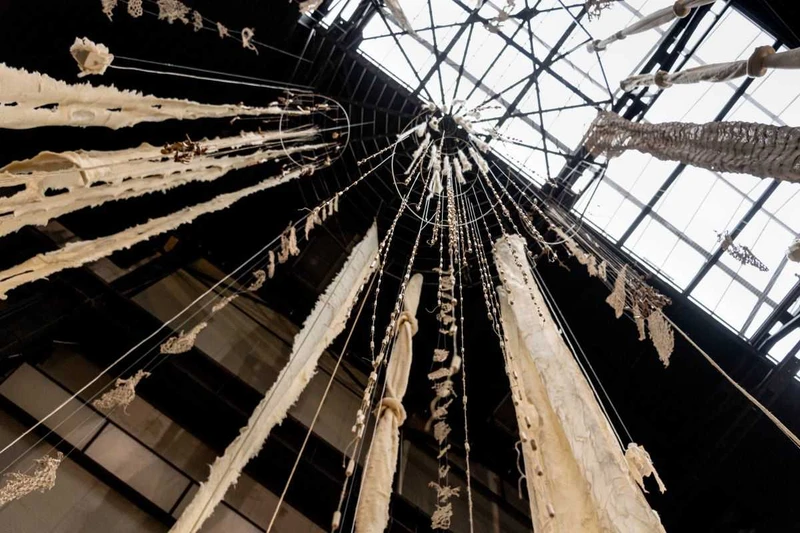Hyundai Commission | Cecilia Vicuña: Brain Forest Quipu
11 Oct 2022-16 Apr 2023


Known for her poetry and her radical textile sculptures that combine natural materials with traditional crafts, Cecilia Vicuña frequently explores themes of ecology, community, and social justice in her work.
Vicuña has transformed the Turbine Hall into Brain Forest Quipu. It is a new multi-media installation made up of sculpture, sound, music, and video, which mourns the destructions of nature and the loss of Indigenous history and culture.
The quipu is an ancient recording and communication system made from knotted threads. Vicuña has been exploring and transforming the quipu in her work for over five decades.
The quipu takes on many forms in the installation. There are two sculptures that hang 27 metres from the ceiling, which Vicuña calls the ‘Dead Forest Quipu’. They are woven together using a range of organic materials, including found objects, unspun wool, plant fibres, rope and cardboard to evoke the look of bleached-out trees and ghostly forms.
This is a uniquely collaborative project with Vicuña working alongside various artists, activists and members of the local community. Some of the items used in the quipu have been collected from the banks of the Thames by women from local Latin American communities.
The ‘Dead Forest Quipu’ sculptures are accompanied by a ‘Sound Quipu’ created by Vicuña with Colombian composer Ricardo Gallo. It brings together Indigenous music from around the world, Vicuña’s own voice and music from fellow artists, alongside field recordings of nature. On monitors under the bridge and at other sites around the building Vicuña also presents a ‘Digital Quipu’, which weaves together videos of Indigenous activists and land defenders who have shared their stories online.
Vicuña writes, “the Earth is a brain forest, and the quipu embraces all its interconnections.” Through this installation, the artist asks visitors to think about the destruction of our forests, the impact of climate change, violence against Indigenous people, and how we can come together in a spirit of repair.